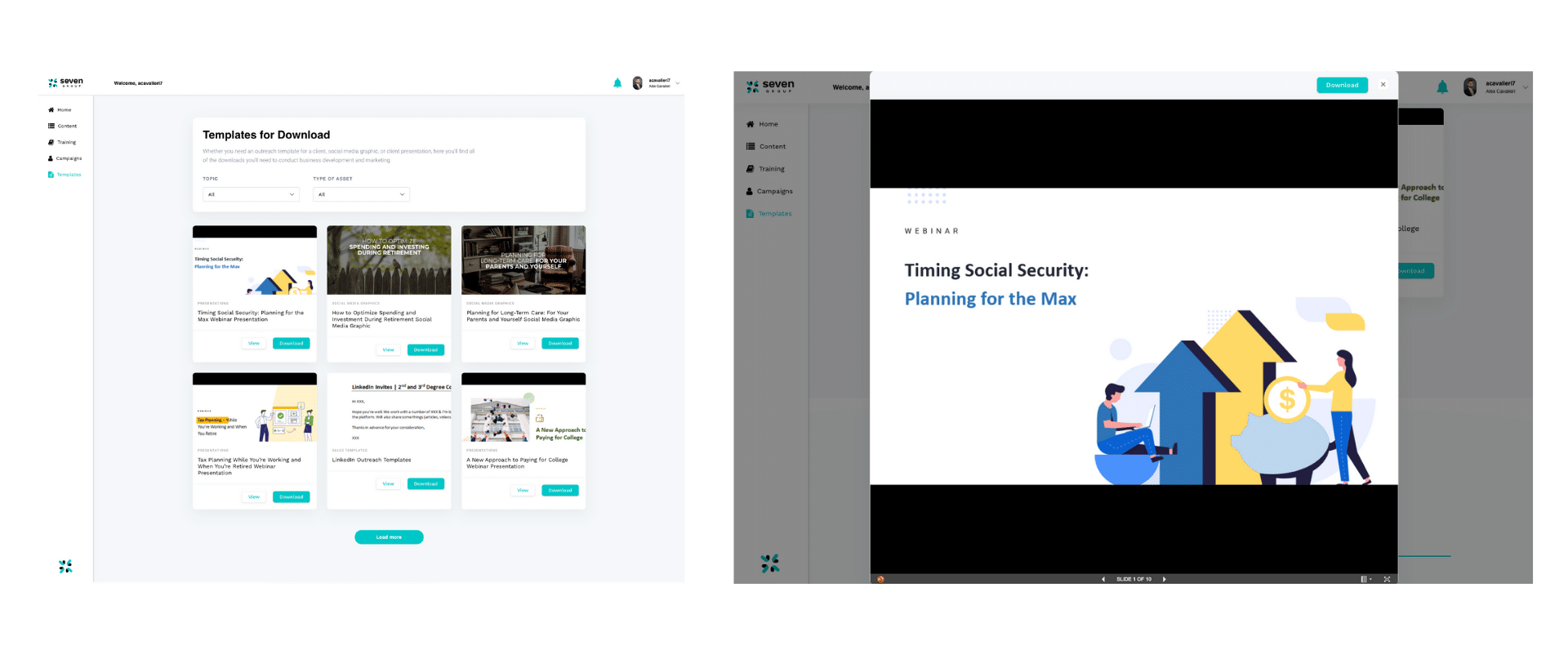Interested in learning more about the Advisor I/O platform?
Leave us your info and we'll send you more details
Blog Detail
A Financial Advisors’ Guide to Marketing Faster and Getting Better Results
by Advisor I/O
You hear often in today’s world, speed wins.
As technological advances have continued to evolve more rapidly for decades, it’s a concept that’s been harped on across industries and businesses. Moving fast, being first has been made famous by movies (hat tip to Ricky Bobby) and propelled businesses to beat their competitors (hello, Netflix). But in a world where we’re constantly connected, constantly trying to generate attention for our brands – being fast and nimble is table stakes, not an advantage.
But in marketing, especially in financial services, speed is rare. With compliance requirements, often inadequate technology, and small teams having to wear multiple hats – getting things out the door and maintaining the quality that is going to cut through the noise is difficult.
So how can you move faster and get better results? Here are six ways.
Don’t want to read? Watch the video.
Series-Out Your Content Strategy
One of the biggest pain points advisors have: creating content. How do you fix this? Series-out your content strategy. Also called episodic content, a series-based content strategy can be a video series, blog series, or podcast series that carries a similar structure from episode to episode and drops at the same time and place on a consistent cadence. This enables you to build quicker – your intro and outro media is typically the same. If you’re writing, your article structure stays consistent.
This allows you to focus on the core media, which it easier to come up with topics and stay within guardrails. The result is a stickier audience. The first week we moved to a weekly cadence on our podcast, we started doubling download numbers. This built more affinity with the audience, and we saw an uptick in inbound leads that started with “I heard your podcast.”
How this could come to life:
- Type: Podcast series geared toward tech executives and finances.
- Structure: 25-minute Q&A on the biggest questions that tech executives face. Every 3 episodes a guest comes on.
- Cadence: Released every two weeks
- Distribution: Apple, Spotify, Website
- Content Variations: 2 video clips, one article based off episode
Set Automation Where Possible
Depending on the camp you’re in, you either love automation or you hate it. We tend to fall in the middle as a marketing technology firm. Automation often gets a bad rap because it feels canned or is too loose on targeting – but that’s just because people use it the wrong way.
So where should you use automation?
- If someone fills out a form on your website, they should go through a workflow to nurture them depending on the form they complete. If it’s a contact form, they should be driven to set up a meeting. If it’s a guide, e-book, or download form, they should be nurtured with content.
- For certain campaigns such as a webinar where you can automate the post-registration follow-ups including emails and text messages as reminders.
- After certain milestones such as a quarterly meeting or yearly review.
Other than that, automation such as random email campaigns often fall flat. Why? Because the context doesn’t match the user journey – where they are in their buying cycle, what they are looking for.
Create Once, Distribute Over and Over
A standard marketing statement is, create once and distribute everywhere. The idea behind this is that writing, filming, editing a piece takes a large amount of time. In certain instances, hours; if you’re not an expert, days. Quality content wins the day in the modern market , but for any single piece the chance that someone is going to see it off one or two shares is minimal.
The average life of a tweet is 18 minutes and only a fraction of your organic followers sees posts that you put out into the world. Repetitive distribution is key. This means sharing a single article or video numerous times throughout weeks and months to get it in front of your audience. Just change up the intro, highlight a different key idea or stat, and keep pushing it out.
Test Religiously
You’ll hear from marketers that marketing is all about tests and understanding what works for your market. Why is this true? Mostly because the platforms change constantly, but also because demographics, geographies, and characteristics of individuals enable different consumption tendencies. For example, webinars in the southwest play very well – we see high registrations off each, higher engagement for those running them. The same is not true in the northeast, where webinars aren’t as successful. Testing to see what resonates with your audience will help you uncover a winning strategy.
What could a test cycle look like?
Two-week cycles of testing different content on different channels.
Start with advertising because that’s the most viable channel to understand what’s working, then move back from there. This means testing headlines, creative, call-to-actions, etc. to understand how your ad is performing. If your ad is performing well, then It’s time to pay attention to the page you’re driving them to: what’s the conversion rate, time on site, bounce rate. These are the three metrics you’re looking at for your pages.
Once you’ve tested ads, you can begin to move to other channels such as email to optimize each part of the marketing funnel.
Stack Your Learnings
Testing is only as good as what you do with the results. Once you have the data, you need to stack your learnings. What do we mean by that? It means understanding the trends that drive marketing success. For example, if you spend two months testing different types of content, say financial planning vs. investing content – then you understand at a larger scale what resonates, which then informs your broader marketing strategy. Stacked learnings allow you to create hypotheses at scale and make big calls relating to your content or distribution approach.
Build Templates
And finally, templates. If you’ve read any of our blog posts before, you’ve heard us talk about templates at nauseam. Why? Because they work. You have 17 different hats to wear, time is the most valuable asset you have as an advisor. We also know that designing content is a major pain point for advisors. You can’t expect to be a designer, copywriter, and video editor on top of everything else. This is where templates come into play. Templates allow you to create faster with the foundational elements in place. A presentation template that already has the flow built out helps you customize it faster. Social media graphics that already have the design elements built in allows you to post more. Video templates that already have the intros done allow you to create more video. Templates are all about scaling your marketing.
Speaking of Templates – We Launched a New Feature Called… Templates
What are Templates? Think of Templates as your content drive for all things social media graphics, presentations, guides, e-books, and more. 100% downloadable, compliance-ready assets that you can use in your day-to-day marketing.

In Templates, we’ll be adding:
- A social media graphic for each new blog article we put into the platform
- A new educational webinar/event presentation every single month
- A set of two guides/e-books every quarter
- Outreach email templates, LinkedIn invite messaging templates, and more
With the launch of Templates, you now have access to more customizable financial planning & investment content at your fingertips, including webinar presentations, sales presentations, e-books, social media graphics, and video scripts.
This feature continues to advance our digital platform – wrapping strategy, planning, guidance, customizable content, automated email campaigns, and more into one digital experience and pairing it with a tech-led consulting program that guides how and when to use marketing content day in and day out.
The Bottom Line
You can’t have a good marketing program without quality, educational, valuable content. But finding ways to execute faster enables you to create faster and reach your audience in hyper-connected world.




